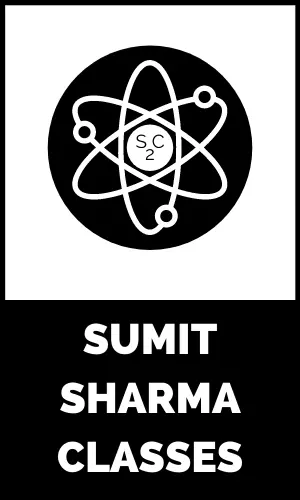Welcome to Sumit Sharma Classes, Dhakoli Zirakpur! Today, we’re diving into one of the most fundamental topics in Class 11 Chemistry – Chemical Bonding and Molecular Structure. Understanding this chapter is crucial as it forms the basis for many advanced concepts in chemistry.
What is Chemical Bonding?
Chemical bonding refers to the force of attraction that holds atoms or ions together in a molecule or compound. Atoms bond to achieve stability by attaining a noble gas electronic configuration (octet or duplet rule).
Types of Chemical Bonds
-
Ionic Bond (Electrovalent Bond)
-
Formed by the complete transfer of electrons from one atom to another.
-
Occurs between metals (electron donors) and non-metals (electron acceptors).
-
Example: NaCl (Sodium Chloride)
-
-
Covalent Bond
-
Formed by the sharing of electrons between two atoms.
-
Types:
-
Single Bond (e.g., H₂)
-
Double Bond (e.g., O₂)
-
Triple Bond (e.g., N₂)
-
-
Polar Covalent Bond (e.g., HCl) – Unequal sharing of electrons.
-
Non-Polar Covalent Bond (e.g., Cl₂) – Equal sharing of electrons.
-
-
Coordinate Bond (Dative Bond)
-
A special type of covalent bond where one atom donates both electrons for sharing.
-
Example: NH₄⁺ (Ammonium ion)
-
-
Metallic Bond
-
Found in metals, where valence electrons are delocalized and shared among all atoms.
-
Molecular Structure & VSEPR Theory
The Valence Shell Electron Pair Repulsion (VSEPR) Theory helps predict the shape of molecules based on electron pair repulsion.
Common Molecular Shapes
| Molecule | Bond Pairs | Lone Pairs | Shape | Example |
|---|---|---|---|---|
| AB₂ | 2 | 0 | Linear | BeCl₂ |
| AB₃ | 3 | 0 | Trigonal Planar | BF₃ |
| AB₄ | 4 | 0 | Tetrahedral | CH₄ |
| AB₃E | 3 | 1 | Trigonal Pyramidal | NH₃ |
| AB₂E₂ | 2 | 2 | Bent (V-Shaped) | H₂O |
Hybridization – Mixing of Atomic Orbitals
Hybridization explains the mixing of atomic orbitals to form new hybrid orbitals with different shapes and energies.
Types of Hybridization
-
sp³ Hybridization (Tetrahedral, e.g., CH₄)
-
sp² Hybridization (Trigonal Planar, e.g., C₂H₄)
-
sp Hybridization (Linear, e.g., C₂H₂)
Hydrogen Bonding & Dipole Moments
-
Hydrogen Bonding: A special dipole-dipole interaction (e.g., H₂O, HF).
-
Dipole Moment: Measures the polarity of a molecule (e.g., HCl has a dipole moment, while CO₂ does not).
Why is This Chapter Important?
-
Helps in understanding reaction mechanisms.
-
Explains physical properties like boiling point, solubility, etc.
-
Forms the basis for organic chemistry and coordination compounds.
Join Sumit Sharma Classes, Dhakoli Zirakpur!
If you’re looking for expert guidance in Class 11 Chemistry, join Sumit Sharma Classes for interactive lectures, doubt-solving sessions, and top-notch study material . Master Chemical Bonding & Molecular Structure with us and build a strong foundation for JEE, NEET, and board exams!









